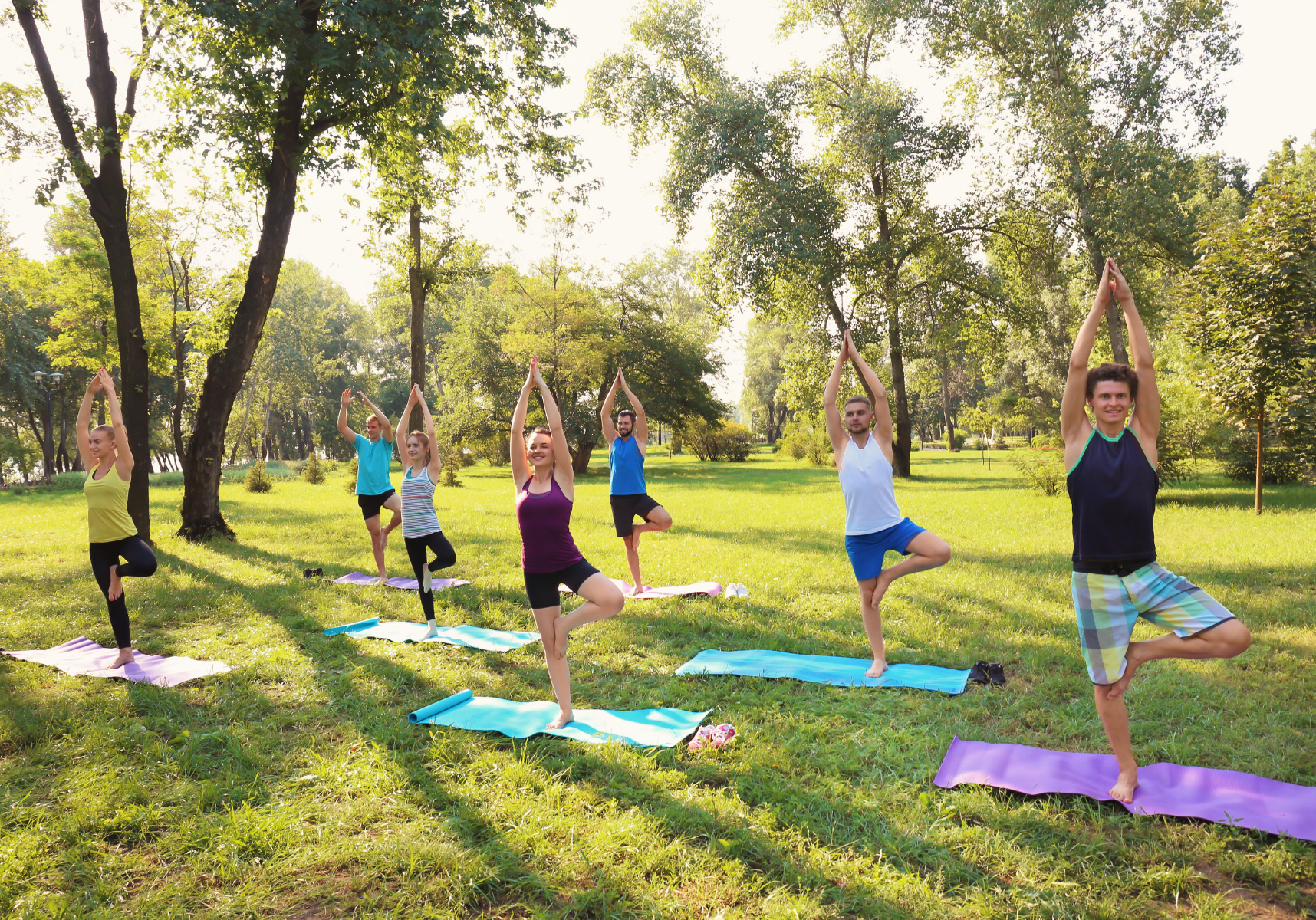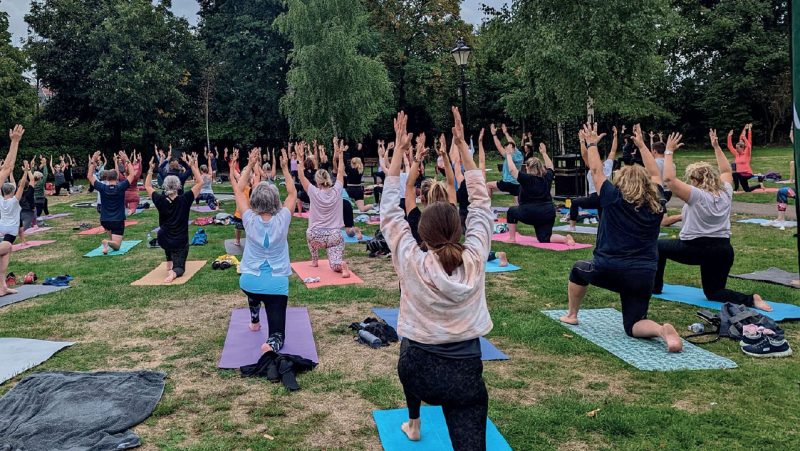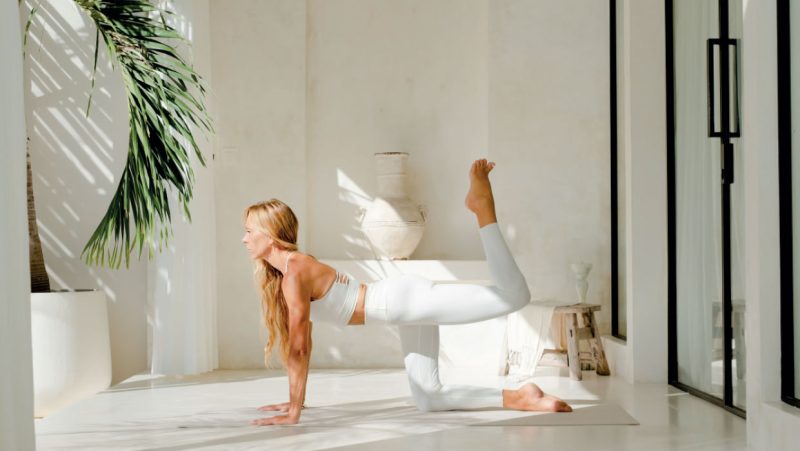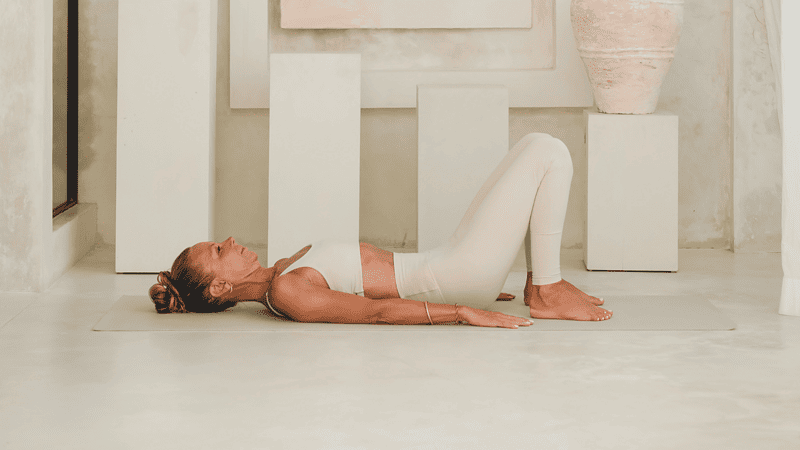
Why Public Spaces Are Perfect for Yoga and Community Building
Explore how outdoor yoga nurtures well-being, strengthens communities and connects you to something bigger right in your local park.
Reading time: 4 minutes
Whether you roll out your mat in a quiet garden or stretch skyward in a bustling city square, yoga in public spaces has a magic all its own. It’s accessible, inclusive and unexpectedly transformative. In a world that often pulls you in a million directions, outdoor yoga invites you to return to yourself — and to your community. Explore the unique benefits of outdoor yoga and see why it’s more than just a workout in the open air.
1. The Natural Boost
Practicing yoga outdoors engages all your senses in ways an indoor class simply can’t. There’s something quietly empowering about feeling the earth beneath your feet, hearing the chatter of birds above and letting your breath sync with the rhythm of the wind. Nature becomes your co-teacher, nudging you into deeper awareness.
Research has shown that being in natural settings reduces stress, supports mental clarity and improves mood. When combined with movement, breathwork and stillness, the results can feel transformative. Public spaces like parks, gardens, beaches and even rooftops offer a refreshing, cost-free alternative to crowded studios and app-driven routines.
If you’ve been feeling disconnected or overwhelmed, stepping onto your mat outdoors may be exactly the grounding ritual you need.
2. Connection Over Competition
One of the most beautiful things about public yoga is how it dissolves the need to perform. There’s no studio branding, no glossy mirrors, no perfectly curated playlists — just you and whoever else has decided to share the space. This shifts the energy from competitive to collaborative.
Practicing together in public settings creates a gentle form of solidarity. You’re not just focusing on your breath — you’re witnessing others do the same. In that shared stillness, something human and healing unfolds. For women, especially — who often carry the emotional load at home, in relationships and in the workplace — this communal flow becomes an act of self-love and social support. It’s a reminder that healing doesn’t have to happen alone and that your presence is enough.
3. Making Wellness More Inclusive and Accessible
Yoga should feel welcoming for everybody, not just the bendy, wealthy or wellness-savvy. However, barriers like cost, lack of nearby studios or intimidating spaces still hold many back. Outdoor yoga gently dismantles those walls. By moving out into public spaces, yoga becomes visible, casual and inclusive. There’s no fancy gear and no membership required — it’s just you, your mat and the open air.
Many educators and community organizers are adopting this approach, using tools like physical activity lesson plans that include goal-setting, customization and variety. These resources make it easier to introduce mindful practices in schools, neighbourhoods and under-resourced communities.
4. A Gateway to Mindful Living
Outdoor yoga doesn’t just affect your hour on the mat — it ripples out into the rest of your life. When you practise surrounded by sunlight, trees or even the distant hum of traffic, you’re invited into a deeper state of presence. That mindfulness doesn’t switch off when class ends — it follows you.
You may find yourself breathing more intentionally during your morning coffee, pausing for a few extra minutes of stillness before bedtime or becoming more patient in moments of stress. Because public yoga is unfiltered and unscripted, it nurtures authenticity. You show up as you are, distractions and all — and that’s where the real growth begins.
5. From Parks to Purpose
If you’ve ever thought, “I’d love to try outdoor yoga, but I don’t know where to start,” here’s your invitation. You don’t need a certification or a huge following. You just need a mat, a quiet spot and the courage to show up.
Many cities and towns now have free or donation-based yoga meetups in public parks, beaches or gardens. You can find them on Facebook groups, Meetup, community noticeboards or simply by word of mouth. If none exist nearby, consider starting a small group yourself. Invite a friend, post a story and before you know it, you might have a mini-community forming around you.
6. More Than Movement
There’s a quiet radicalism to unrolling your mat in the middle of a public space. For many women, especially those who’ve felt unseen or overwhelmed in traditional wellness settings, this act is more than physical — it’s political. You’re claiming space and choosing visibility. You’re making your well-being a priority in a world that often expects you to shrink.
Public yoga encourages you to take up room — physically, emotionally, spiritually — and to do so unapologetically. The more often people practise together in shared spaces, the more they redefine what those spaces are for. Parks become places of healing. Sidewalks become stages for joy. Green spaces become sacred.
Unroll, Uplift, Unite
Practising yoga outdoors isn’t just about staying flexible — it’s about staying connected to yourself, your surroundings and a wider circle of like-minded souls. Public spaces give you the perfect stage to breathe deeper, stretch wider, and build a community grounded in intention and inclusion. Let your breath be your soundtrack and your presence be your power. You’re not just building strength — you’re building something much bigger.





